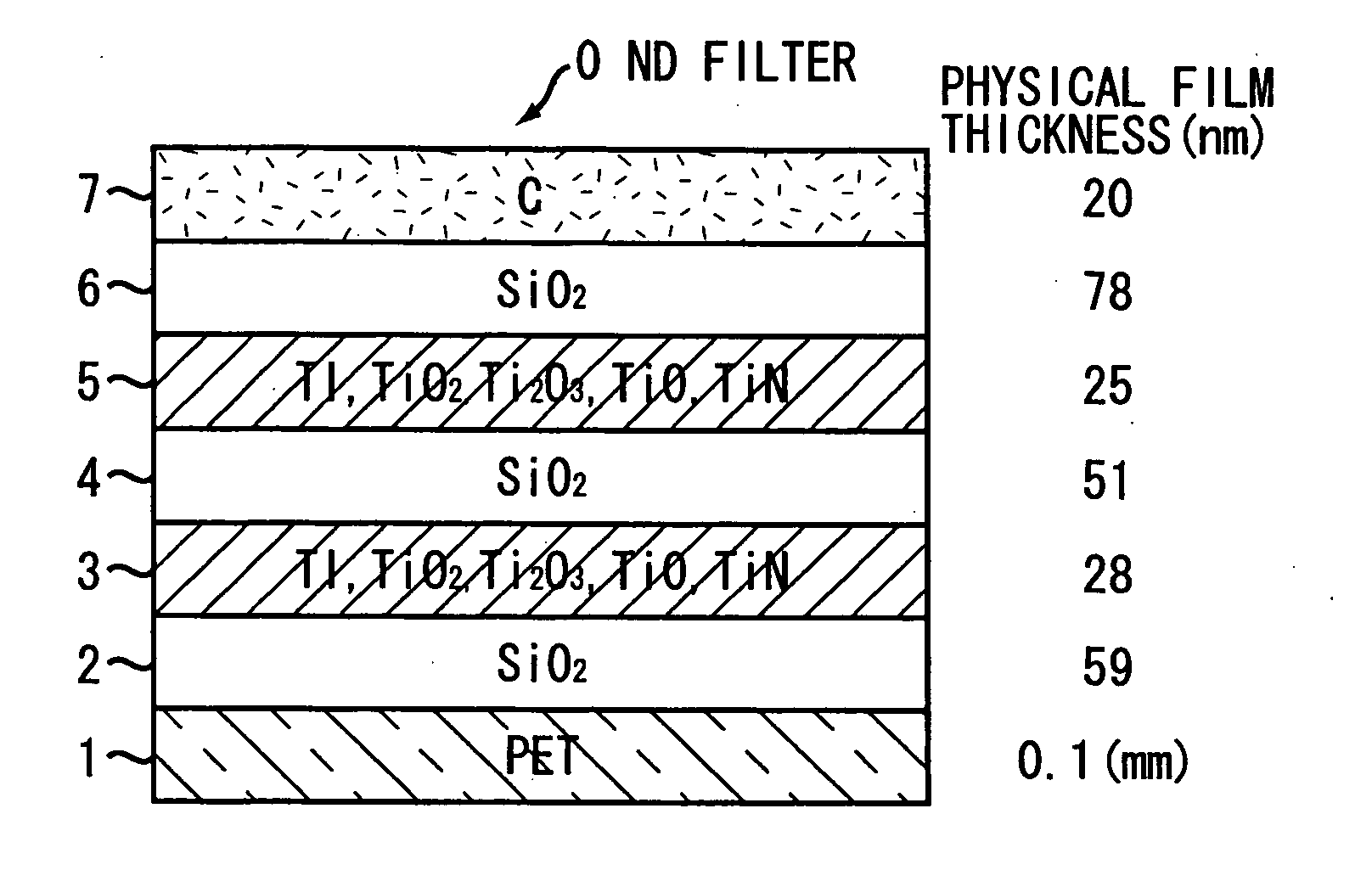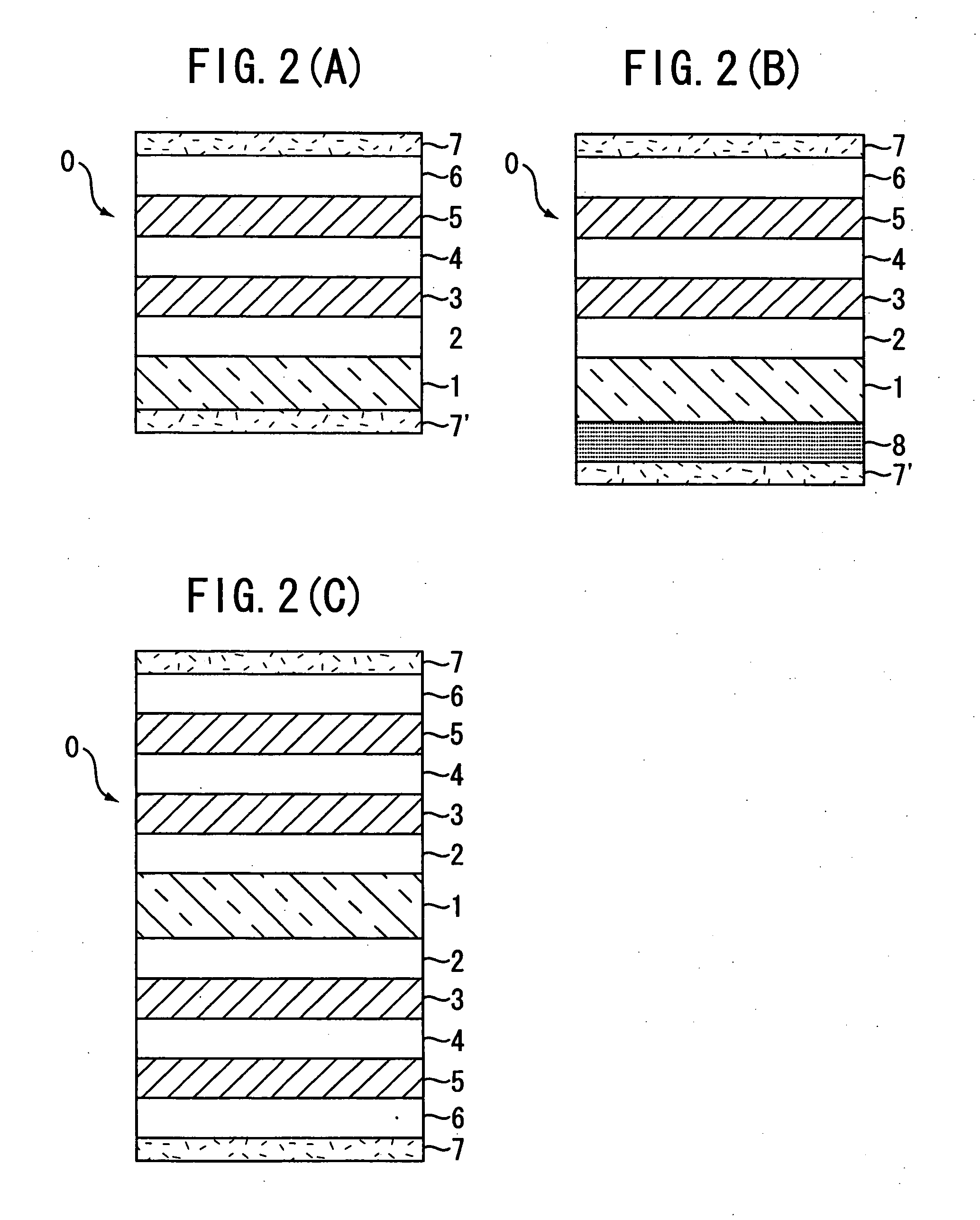ND filter of optical film laminate type with carbon film coating
- Summary
- Abstract
- Description
- Claims
- Application Information
AI Technical Summary
Benefits of technology
Problems solved by technology
Method used
Image
Examples
Embodiment Construction
[0024] Embodiments of the present invention will be described in further detail with reference to the accompanying drawings. FIG. 1 is a schematic sectional view showing the configuration of a thin-film ND filter according to the present invention. As shown in FIG. 1, an ND filter 0 is a thin film type formed by laminating light-absorbing films 3 and 5 and dielectric films 2, 4, and 6 on a transparent substrate 1. Characteristically, a carbon film 7 is formed to clad the surface of the laminate. According to needs, it may be preferable to form another carbon film on the rear side of the transparent substrate 1. Preferably, the carbon film 7 is formed by the deposition process such as CVD or PVD at the deposition temperature of 150° C. or less. The light-absorbing films 3 and 5 are composed of a mixture of metal and compound thereof. For example, the metal material is Ti. Instead, it may be preferable to choose from Cr, Ni, NiCr, NiFe, or NiTi. The dielectric films 2, 4, and 6 are us...
PUM
 Login to View More
Login to View More Abstract
Description
Claims
Application Information
 Login to View More
Login to View More - R&D
- Intellectual Property
- Life Sciences
- Materials
- Tech Scout
- Unparalleled Data Quality
- Higher Quality Content
- 60% Fewer Hallucinations
Browse by: Latest US Patents, China's latest patents, Technical Efficacy Thesaurus, Application Domain, Technology Topic, Popular Technical Reports.
© 2025 PatSnap. All rights reserved.Legal|Privacy policy|Modern Slavery Act Transparency Statement|Sitemap|About US| Contact US: help@patsnap.com



